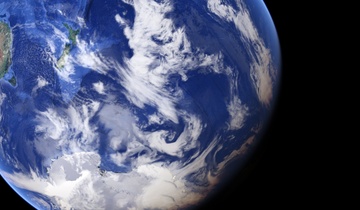A “supercoolometer”, a device that sounds like it should be used to measure hipsters, has found the coldest seawater on Earth, under Antarctic sea ice.
NIWA oceanographer Dr Craig Stevens and his team are researching why, in a warming world, sea ice is growing in the Antarctic even though it is receding in the Arctic. Sea ice growth is a vital part of the climate system that influences many aspects of life on the planet. The question is, are the giant ice shelves around Antarctica responsible for this paradox?
This year the team deployed a highly sensitive instrument called a supercoolometer as well as their usual array of ocean turbulence sensors. It was developed at NIWA by Matt Walkington to look at an often-ignored but possibly key part of the Earth’s climate system – seawater colder than freezing point.
Dr Stevens has recently returned from a three-week field trip to Antarctica along with his team – NIWA’s Brett Grant, a group from the University of Otago and the artist and communicator Gabby O’Connor. They achieved the first ever successful deployments of the supercoolometer to measure “supercool” seawater formed under ice shelves when “warm” seawater melts the ice underside.
The scientists set up their field camp on two-metre thick ice, about 25km from Scott Base, and drilled holes through the ice to reach the seawater below.
“The camp was above the very cold seawater flowing out from beneath a melting ice shelf. This water drains upwards until it reaches the edge of the shelf, where it flows out into the wider ocean.
“As it rises, the reduction in pressure elevates the freezing temperature, and so the water finds itself colder than the temperature at which it should form ice,” Dr Stevens says.
A tiny temperature change has a huge effect
At –1.94°C, this water is highly significant from a climate perspective. Dr Stevens says while it is only slightly colder than freezing, that tiny temperature change is physically huge, because ice starts to form and the ocean changes its state.
“We are looking at the possibility that the answer to why Antarctic sea ice is expanding lies in the production of this supercool seawater. It is a pathway for ice shelf water to influence sea ice growth far beyond the shelves. This is a significant issue because these shelves make up 40 per cent of the Antarctic coastline, and the Ross Ice Shelf is the size of France.
“It’s also waving the flag for exploring some of the unique processes within the Earth system and finding out which of those are important.”
Along with temperature, the supercoolometer measures salinity, and other sensors measure turbulence in the water and currents.
The process comes with its own set of challenges. Water freezes on the measuring instruments within an hour of deployment. “We are developing techniques to get around that. You can make measurements, but they might be corrupted, so this is part of the scientific process to try to evaluate how reliable the measurements are.”
Analysis of this latest field trip to Antarctica is already underway, and next year the team will measure the rate of melting under the ice shelves.
“This time we went through 5m of ice and platelets – in a year’s time we'll go through 350m of ice. We’ll be in the middle of the Ross Ice Shelf, the largest on the planet. Beneath this ice is 300m of ocean that’s never been sampled before, which is pretty exciting.”





